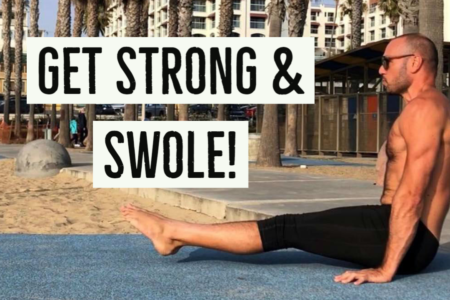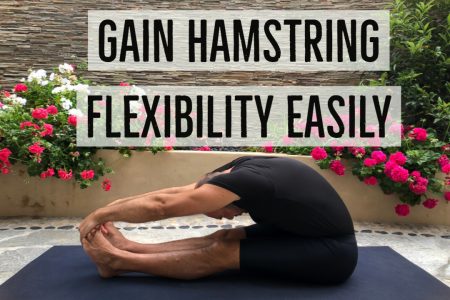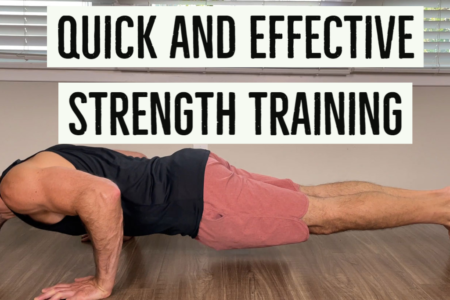The lymphatic system and immune system are very closely tied together. The lymphatic vessels are a network of vessels that are separate from but intertwine together with the blood vessels and return excess tissue fluid to the blood vascular system. The immune system is going to fight infection and foreign objects. Its main components are lymphocytes, lymphoid tissue and lymphoid organs (notice they all start with lymph).
Lymphatic system
As blood passes through the capillary beds, slightly more fluid leaks out than re-enters. The lymphatic vessels collect this excess fluid and blood proteins from the loose connective tissue and return it to the bloodstream. When we take this fluid back and put it in the lymphatic vessels we’re going to call it “lymph.” Lymph flows ONLY toward the heart. If we didn’t have a backup plan our feet would swell up, which certainly happens to someone who has poor circulation and their lymph vessels are blocked. Edema is the name when you have this build-up.
Orders of lymphatic vessels
Lymphatic capillaries are the smallest and first to receive lymph.
Lymphatic collecting vessels collect from lymph capillaries.
Lymph nodes are located along these collecting vessels.
Lymph Trunks
Lymph Ducts empty in the veins of the neck.
Lymphatic Capillaries
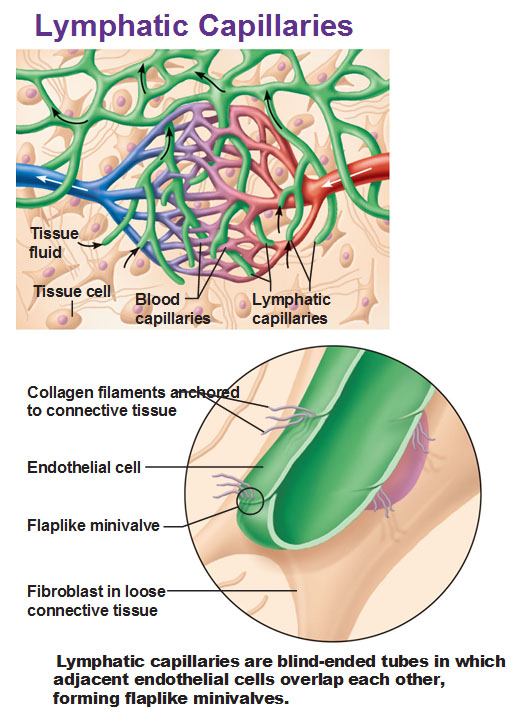 These are located near our blood capillaries and receive tissue fluid from connective tissue when there is an increased volume of tissue fluid. The minivalve flaps open and allow fluid to enter.
These are located near our blood capillaries and receive tissue fluid from connective tissue when there is an increased volume of tissue fluid. The minivalve flaps open and allow fluid to enter.
In this picture above this is just a view of general tissue cells with a generic capillary bed. Below that is a close up of a lymphatic capillary that has a very specific structure. It is made up of a single layer of endothelial cells with few intercellular junctions that are layed over each other like roof tiles. This creates minivalves that can open very easily when you have a build up of fluid from the outside.
Fluid moves from higher pressure to lower pressure, so when the inside is empty it’s going to push on that valve cause of the flap. This lymphatic capillary will eventually fill with all the extra fluid and suddenly when there’s more on the outside than the inside, the capillary gets sealed shut so that it doesn’t leak back out. We could suck up a lot of fluid with this structure but the bummer is that because these valves are so easy to open, we could suck up bacteria and viruses and entire cancer cells. So once something is in it can’t get out.
We do not have lymphatic capillaries in bones and teeth (not much fluid there leaking out anyway), bone marrow or the central nervous system. Lacteals are highly specialized capillaries located in the villi of the small intestine to absorb fats/fatty acids.
Lymphatic Collecting Vessels
The capillaries dump into lymphatic collecting vessels. They are just like blood vessels and made up of the same things but much thinner. They also have valves, just like veins, but more of them to ensure the flow of lymph. The lymph is propelled by the movement of skeletal muscles, pulsing of nearby arteries and tunica media (smooth muscle). Movement of lymph in general is very slow.
Lymph nodes
We’ve heard of swollen lymph nodes, like in the neck or the groin. They can be as small as a millimeter but the ones we think about are enlarged up to 25mm (~1 inch). We have about 500 scattered throughout the body and they tend to be clustered in the body so let’s investigate the clusters.
The superficial lymph nodes we could on our body are the axillary, inguinal, and cervical nodes. There are deeper nodes deep inside such as in the tracheobronchial, aortic and iliac regions.
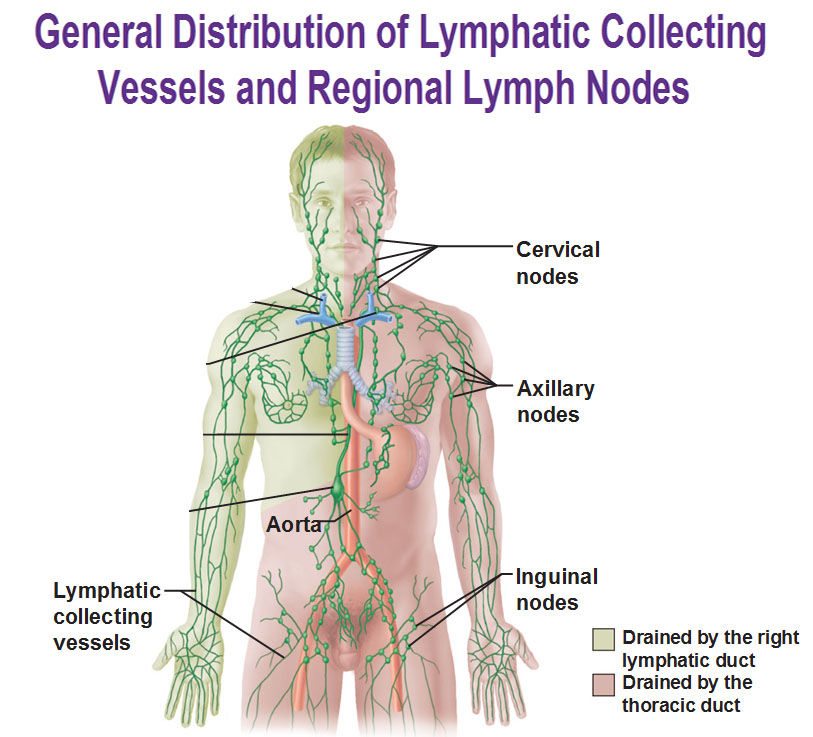
Microscopic anatomy of a lymph node
This kind of looks like a kidney. Remember efferent means coming out and afferent means coming in. We have lymph coming in from the afferent lymphatic vessels and going into a lymph sinus which is a section, separated by trabeculae, containing reticular fibers and macrophages to destroy bad things. The lymph circulates in the sinuses, eventually passing out the efferent vessel and into another node. The lymph passes through several lymph nodes, so hopefully it’s free of virus, bacteria and cancer cells by the time it returns to the blood.
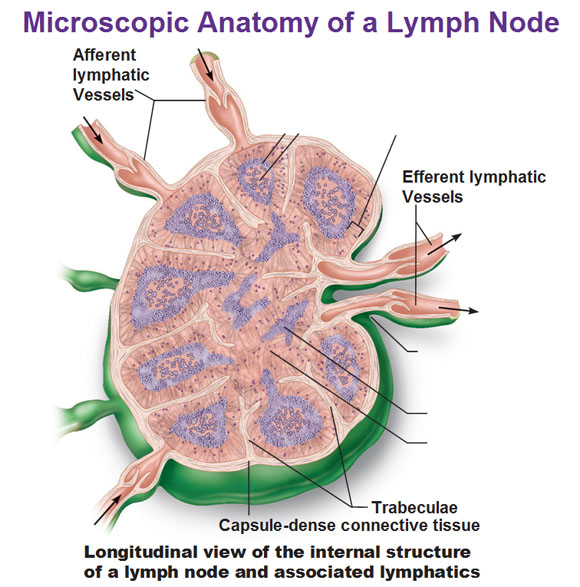
Lymphatic trunks
As we collect lymph, it goes to these trunks. You could see in green, approaching into the thorax and now they are pretty good-sized vessels and we going to aim for these veins such as the left subclavian vein to lead back to the superior vena cava and work its way into the heart.
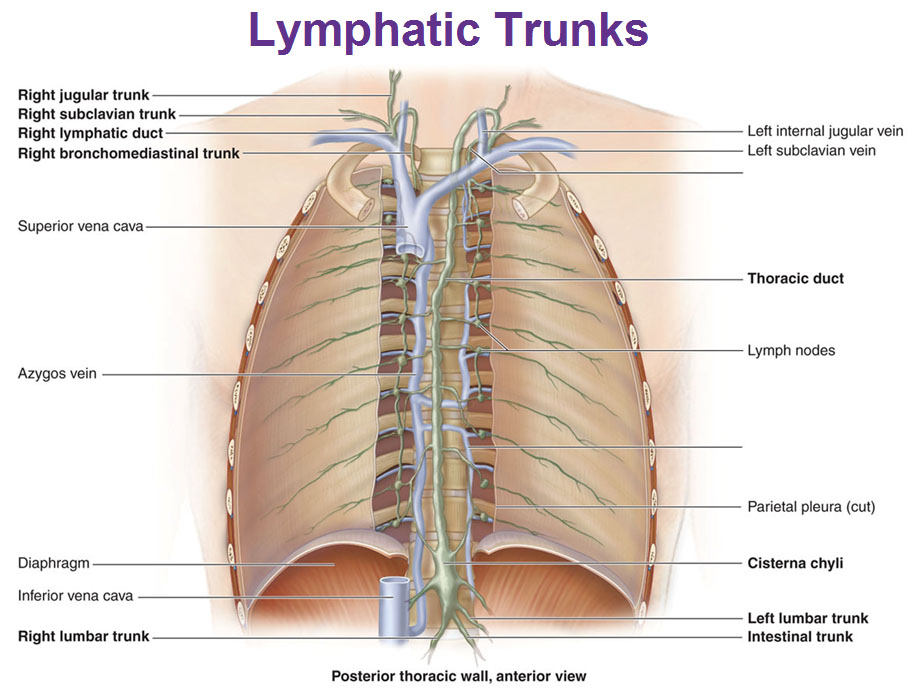
Lymphatic ducts
Lymphatic ducts finally dump fluid back into the system. Below we have a thoracic duct emptying into the left internal jugular and left subclavian veins. Cisterna chyli is basically a widening at the beginning of the thoracic duct. The thoracic duct dumps into the left side while the right lymphatic duct empties at the right internal jugular and right subclavian artery.
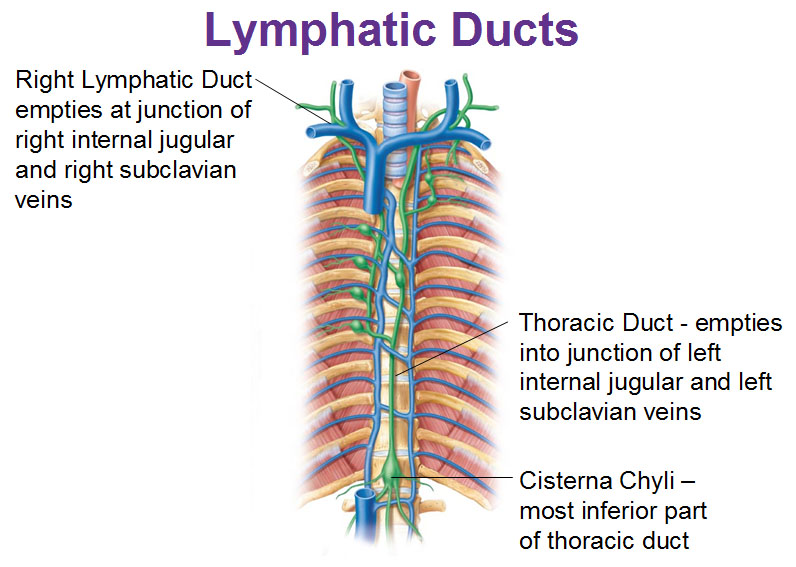
The continue with this discussion, the most natural thing to read about next would be the immune system since they are closely tied together.
Use this Table of Contents to go to the next article
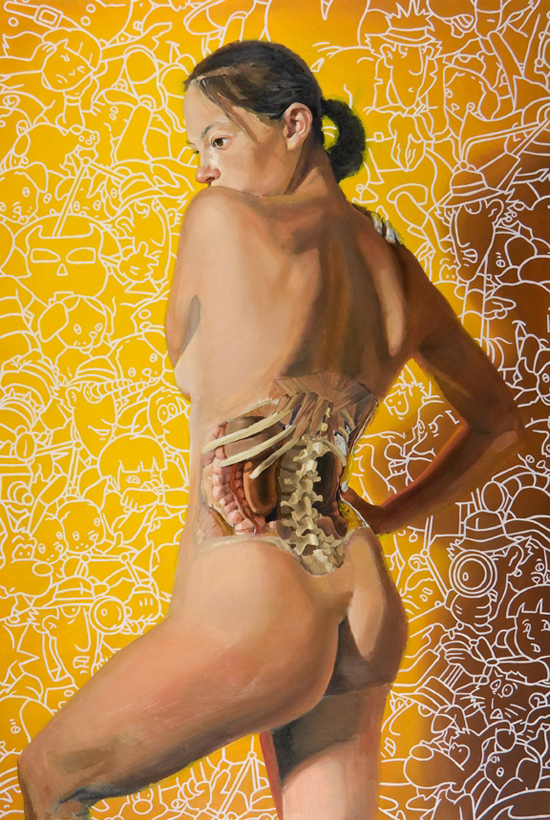
YOU ARE HERE AT THE SPECIALIZED SYSTEMS


